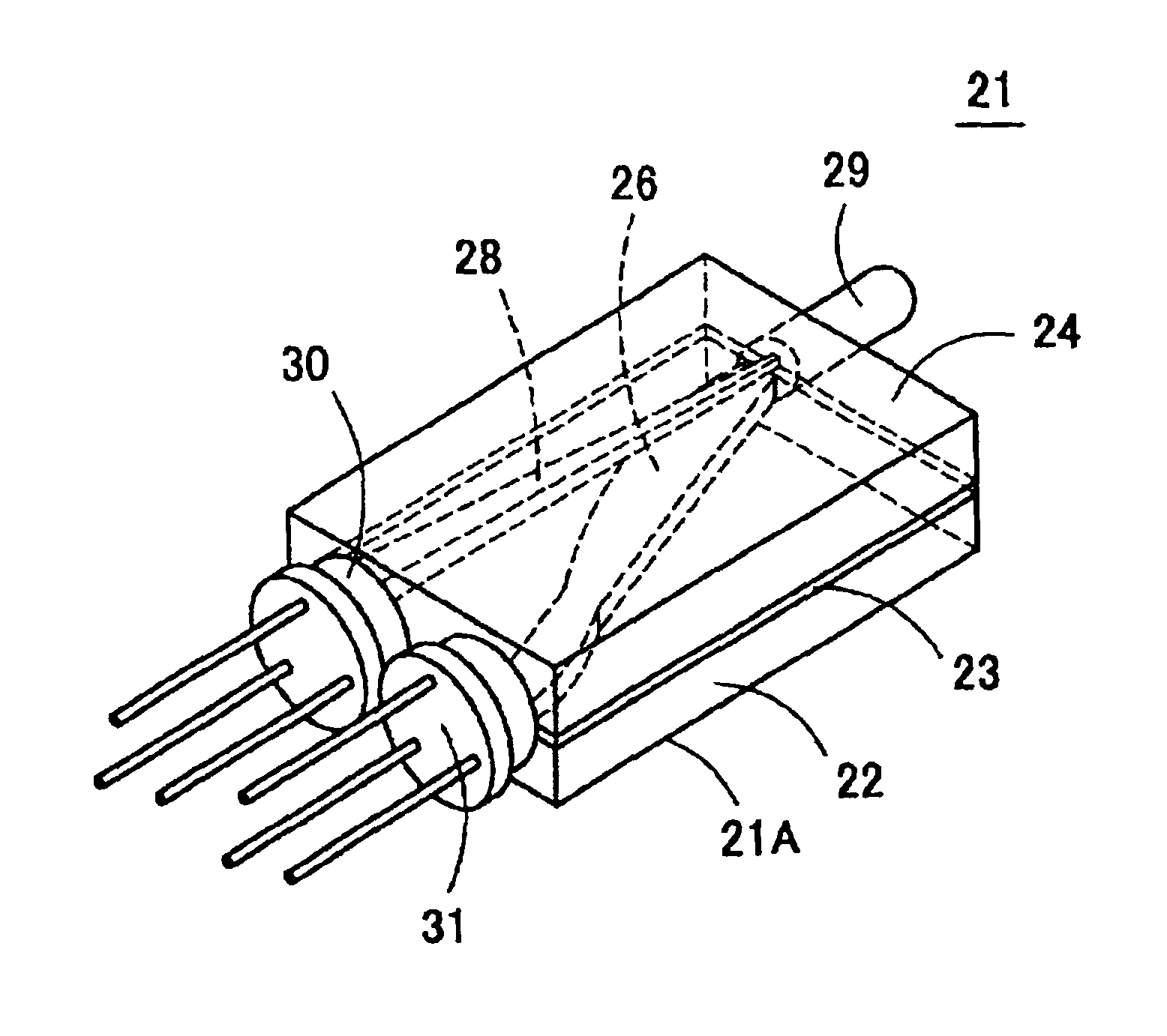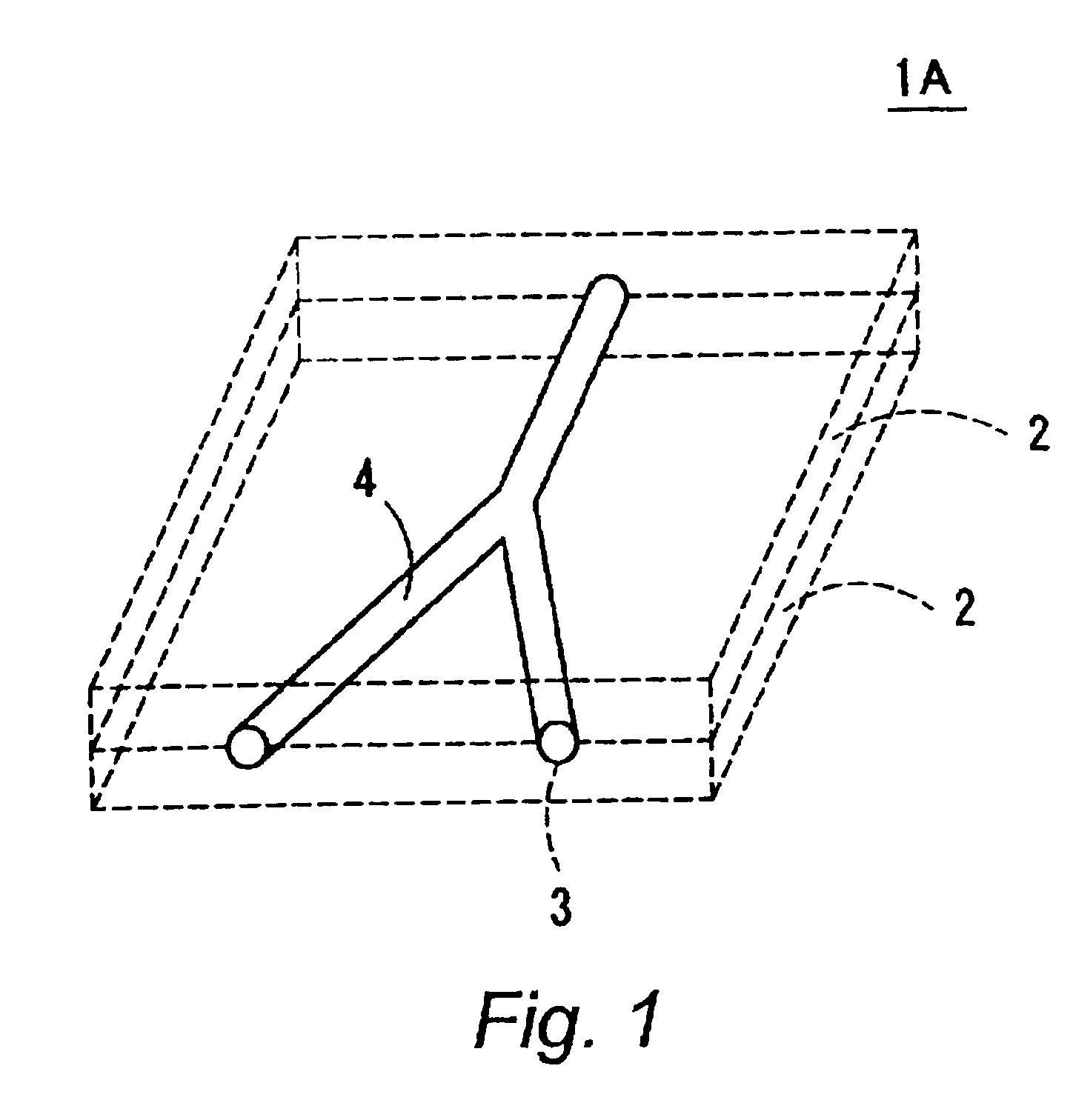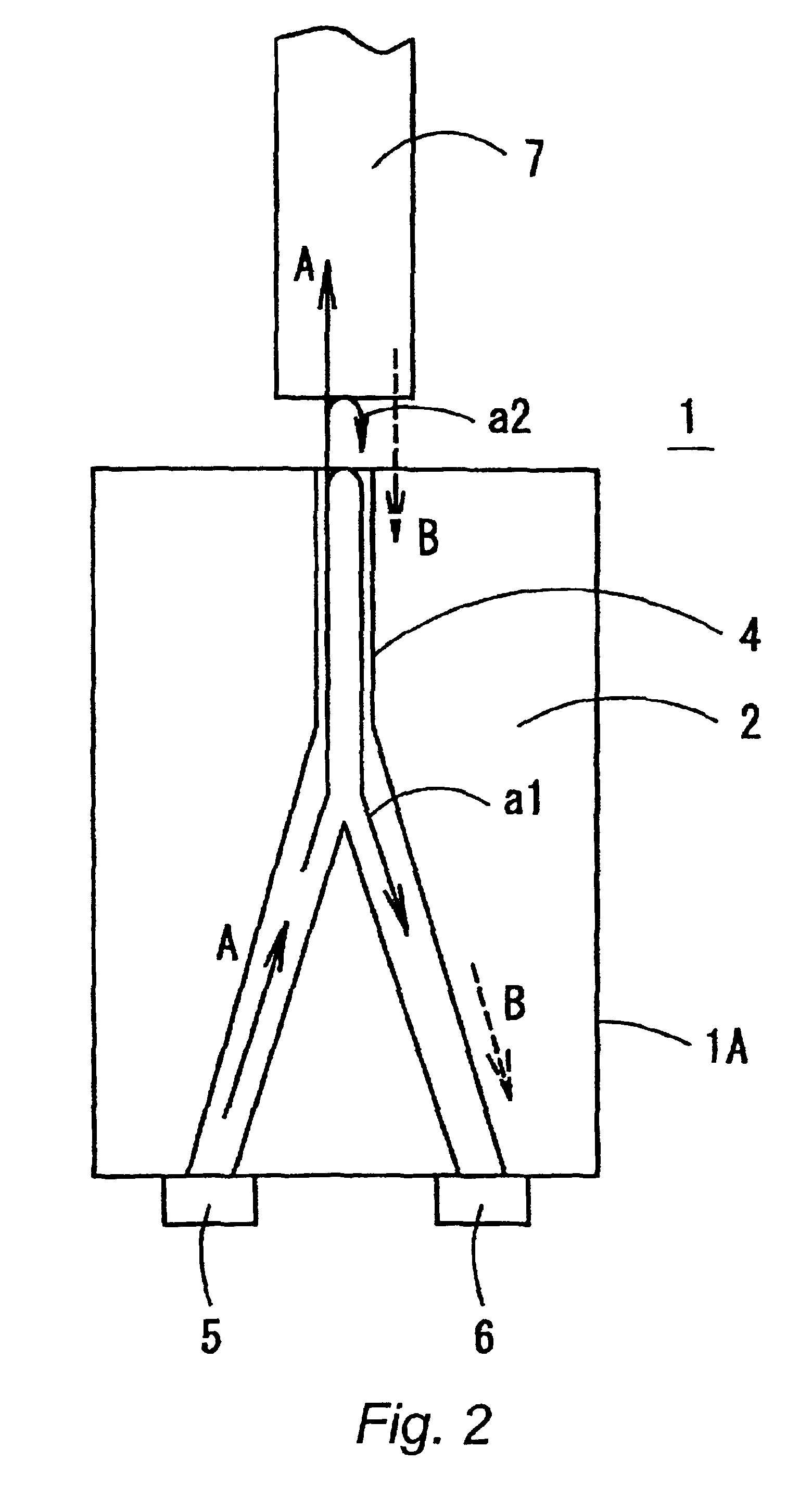Optical device, and optical transceiver and other optical apparatuses using the optical device
- Summary
- Abstract
- Description
- Claims
- Application Information
AI Technical Summary
Benefits of technology
Problems solved by technology
Method used
Image
Examples
embodiment 1
[0084]FIG. 4 is a perspective view showing how an optical transceiver 21 according to a first embodiment of the present invention is used. FIG. 5 is an exploded perspective view of an optical device 21A that is used in the optical transceiver 21. The optical device 21A is composed of a reception-side substrate 22, a cladding layer (isolation layer) 23, and a sending-side substrate 24. The reception-side substrate 22 and the sending-side substrate 24 are integrated with each other, that is, bonded to each other, with the cladding layer 23 interposed in between.
[0085]The reception-side substrate 22 is composed of a substrate 22A made of a transparent resin (e.g., PMMA (polymethyl methacrylate); refractive index: 1.49) and a receiving light guide (core) 26. The top surface of the substrate 22A is formed with a groove 25 both side surfaces of which consist of a straight portion and a curved portion. The receiving light guide 26 is formed in the groove 25 by filling the groove 25 with a ...
embodiment 2
[0096]FIG. 11 is a perspective view of an optical transceiver 52 according to a second embodiment of the invention. A plurality of light input elements 30a and 30b having different emission wavelengths are attached to the light-input / reception-side end surface of the optical device 21A at positions corresponding to the sending light guide 28. A lens 32 is inserted between the end face of the sending light guide 28 and the light input elements 30a and 30b. Therefore, one of the light input elements 30a and 30b emits light, an optical signal having the emission wavelength of the one light input element 30a or 30b is gathered by the lens 32 and input to the sending light guide 28 through its end face. Further, a plurality of light-receiving elements 31a and 31b having different sensitive wavelength ranges are attached to the receiving light guide 26 of the light-input / reception-side end surface of the optical device 21A. The light-receiving elements 31a and 31b receive respective optic...
embodiment 3
[0097]FIG. 12 is a sectional view of an optical transceiver 53 according to a third embodiment of the invention. A light-receiving element 31 is attached to the top surface, rather than the end surface, of an optical device 21A. In the optical transceiver 53, the bottom surface of the reception-side substrate 22 is formed with a triangular recess at a position corresponding to the end portion of a receiving light guide 26, whereby a total reflection surface 33 having an angle of about 45° is formed. A lens portion 34 is formed at the boundary between the receiving light guide 26 and the cladding layer 23 so as to be opposed to the total reflection surface 33. The light-receiving element 31 is fixed to the top surface of the optical device 21A. Reference numeral 35 denotes projections for positioning of the light-receiving element 31.
[0098]An optical signal coming through the receiving light guide 26 is totally reflected upward by the total reflection surface 33, gathered by the lens...
PUM
 Login to View More
Login to View More Abstract
Description
Claims
Application Information
 Login to View More
Login to View More - R&D
- Intellectual Property
- Life Sciences
- Materials
- Tech Scout
- Unparalleled Data Quality
- Higher Quality Content
- 60% Fewer Hallucinations
Browse by: Latest US Patents, China's latest patents, Technical Efficacy Thesaurus, Application Domain, Technology Topic, Popular Technical Reports.
© 2025 PatSnap. All rights reserved.Legal|Privacy policy|Modern Slavery Act Transparency Statement|Sitemap|About US| Contact US: help@patsnap.com



